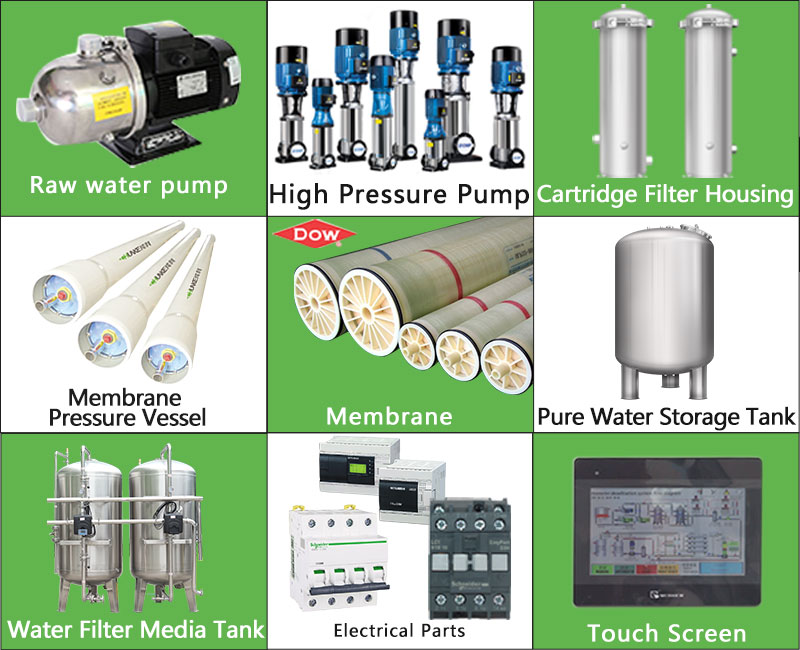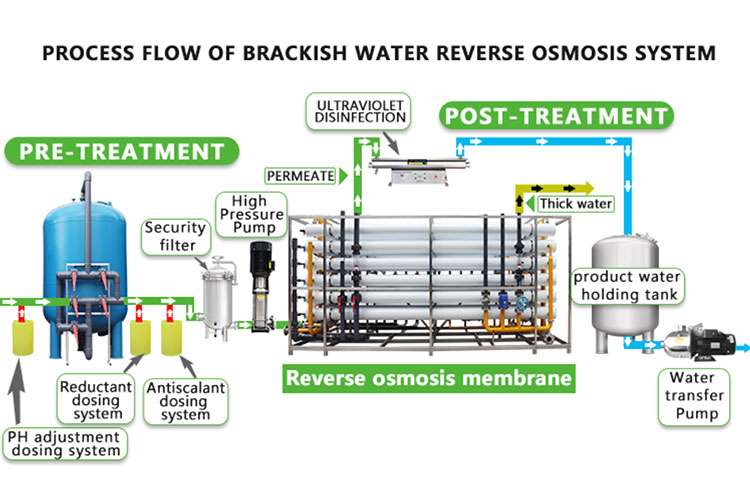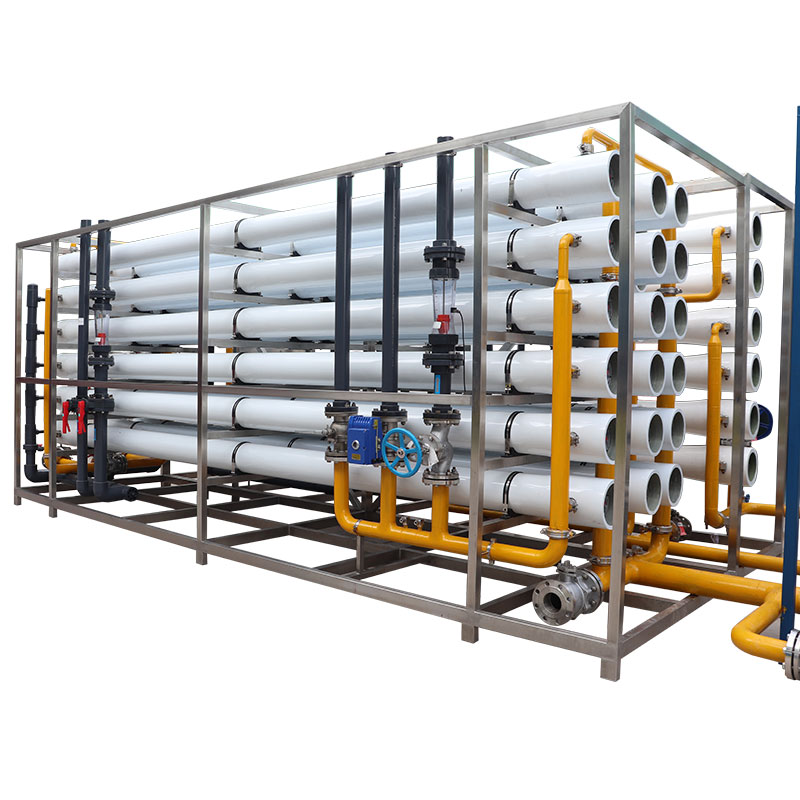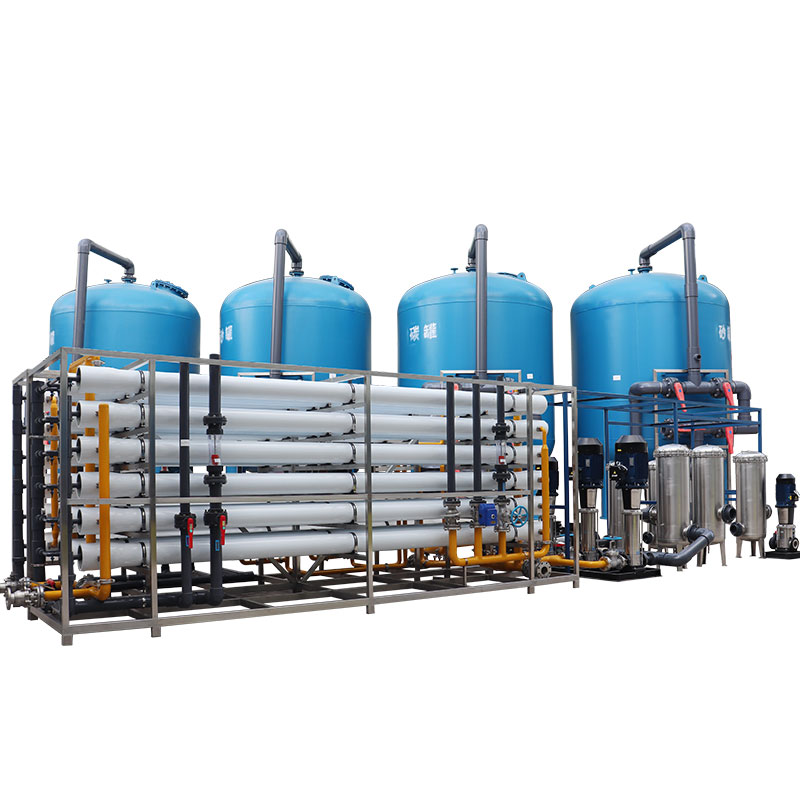How many micron filters can remove rust from well water?
Well water, as an important source of water for many homes, farms and industrial facilities, is generally considered pure and natural. However, the problem of rust in well water often troubles users, causing poor water quality and damage to pipes and equipment. In order to ensure the purity of water quality, many users choose to install filters to remove rust from well water.
But the question is, how many micron filters can effectively remove rust from well water? This article will explore this issue in depth and analyze in detail the effectiveness of filters of different micron levels in dealing with well water rust.

Sources and hazards of rust in well water
Sources of rust
Rust in well water mainly comes from: groundwater containing iron, old pipe systems, corrosion of wellbores and pumps.
● Groundwater containing iron: Well water is often extracted from underground, and groundwater contains a certain amount of soluble iron. These iron ions undergo oxidation reaction after being exposed to air to form rust.
● Old pipe systems: Many homes and facilities that use well water have old pipes, especially those made of iron or steel. After long-term use, the inside of the pipes will gradually rust, and this rust will flow into the water system with the water.
● Corrosion of wellbore and pumps: Wellbore, pumps and other related equipment may also corrode due to long-term contact with water, causing rust to flow with the water.
The impact of rust on well water quality
Rust in well water can cause a variety of problems, not only affecting water quality, but also may have adverse effects on daily life and industrial production:
● Impact on water quality and taste: When well water contains rust, the water will appear yellow or brown, with a distinct metallic taste, which not only affects the sensory experience of drinking water, but may also make people doubt the safety of water.
● Cause pipe blockage: Rust particles are easy to deposit in pipes. Over time, these deposits may cause pipe blockages and affect the normal operation of the water supply system.
● Damage to home appliances and facilities: Rust accelerates the wear of home appliances and equipment, especially in equipment such as water heaters and washing machines, where rust may cause equipment damage or performance degradation.
● Impact on industrial production: In some industrial processes, rust in well water may cause product quality problems, affect production efficiency, and increase maintenance costs.

What is the micron level of the filter?
The micron level of the filter refers to the minimum size of particles that the filter can retain. Micron (μm) is a unit of measurement for particle size, and 1 micron is equal to one thousandth of a millimeter. The micron level of the filter usually ranges from tens of microns to less than 1 micron. The smaller the level, the finer the particles that the filter can retain.
● Coarse filtration: Usually 50 to 100 micron level, suitable for removing larger particles such as sand, soil and larger rust particles.
● Medium filtration: Usually 10 to 50 micron level, suitable for removing medium-sized particles, including smaller rust particles and some suspended matter.
● Fine filtration: Usually 1 to 10 micron level, suitable for removing finer particles, such as tiny rust particles, some bacteria and microorganisms.
● Ultrafine filtration: Less than 1 micron, suitable for removing extremely fine particles, including bacteria, viruses and some soluble substances.
Rust Particle Size
The size of rust particles varies depending on how they form and where they come from. Generally speaking, rust particles can range in size from a few microns to tens of microns. Larger rust particles are often formed in pipes and equipment, while smaller rust particles can originate from fine precipitates formed by oxidation of dissolved iron in the water.
● Large rust particles: usually larger than 20 microns in diameter, can be removed by coarser filters.
● Medium rust particles: between 10 and 20 microns in diameter, require medium micron filters for treatment.
● Small rust particles: between 1 and 10 microns in diameter, can only be effectively removed by finer filters.
How many micron filters can remove rust from well water?
Depending on the size of the rust particles, choosing the right filter micron level is key to ensuring effective rust removal. Generally speaking, the effective micron level range for removing rust from well water is between 5 and 20 microns. The following factors should be considered for specific selection:
● Average size of rust particles in water: If the rust particles in the well water are large, a filter of 10 to 20 microns can be selected; if the rust particles are fine, a filter of 5 to 10 microns should be selected.
● Flow requirements of the filter: The smaller the micron level, the lower the flow rate of the filter. Therefore, when choosing the appropriate micron level, the filtration effect and water flow requirements should be balanced to ensure that the filter does not affect normal water demand while removing rust.
● Other components of well water: In addition to rust, well water may also contain other particles or pollutants. If there are a lot of suspended matter in the water, pretreatment (such as sedimentation or coarse filtration) may be required before using a finer filter to remove rust.

What are the common types of well water rust filters?
Different types of filters have their own advantages and disadvantages in removing rust. The following are several common types of well water rust filters:
Sedimentation filter
Sedimentation filter is a relatively simple filtering device, usually made of stainless steel mesh, fiber mesh or other materials. It has a larger micron level (usually above 50 microns) and is mainly used to remove larger particles of rust, sand and other suspended matter. This filter is suitable as a pre-filter and is used in conjunction with a finer filter.
● Advantages: large flow rate, simple maintenance, suitable for primary filtration.
● Disadvantages: cannot remove smaller particles of rust, need to be cleaned or replaced regularly.
Fiber cartridge filter
The fiber cartridge filter is made of high-density fiber material, and the micron level is usually between 5 and 20 microns, which is suitable for removing medium-sized rust particles. It is widely used in well water treatment for households and small industries.
● Advantages: good filtration effect, suitable for removing medium-sized particles of rust.
● Disadvantages: The filter element has a limited life and needs to be replaced regularly. Filter element clogging may cause a decrease in water flow.
Activated carbon filter
Activated carbon filters are mainly used to remove odors, organic matter and chlorine in water, but they can also remove a certain amount of rust. Its micron level is usually between 5 and 10 microns, which is suitable for use in cases where there is less rust.
● Advantages: multi-functional filtration, can improve water quality and taste.
● Disadvantages: limited effect when dealing with large amounts of rust, activated carbon is easily saturated and needs to be replaced regularly.
Reverse Osmosis (RO) System
The reverse osmosis system is a highly efficient water treatment technology with a filtration accuracy of up to 0.0001 microns, which can remove almost all suspended particles and dissolved substances including rust. However, due to the high filtration accuracy of the reverse osmosis system, it is usually used for deep water purification rather than simple rust removal.
● Advantages: Remove all suspended particles and the water quality is extremely pure.
● Disadvantages: High cost, complex maintenance, and not suitable for large-flow well water treatment.

Comprehensive recommendations for well water rust removal
According to the rust problem in well water, choosing the right micron level and type of filter is the key to the solution. In addition, regular maintenance and replacement of filters to ensure the normal operation of the equipment is also essential. For well water users, understanding the source and characteristics of rust in water and choosing the most suitable filter will help ensure the quality and safety of water use.
Evaluate well water quality
Before selecting a filter, water quality testing should be carried out first to understand the rust content and particle size in the well water. This will help users choose the most suitable filter micron level.
Choose the right filter
Depending on the size of the rust particles in your well water, choose the right filter of the right micron level and type. For most well water users, a 5 to 20 micron filter is usually an effective choice for removing rust.
Regular maintenance and replacement
Rust will gradually clog the filter and affect the filtering effect. Therefore, regularly check and replace the filter element to keep the filter in normal operation and ensure the quality and safety of your well water.






